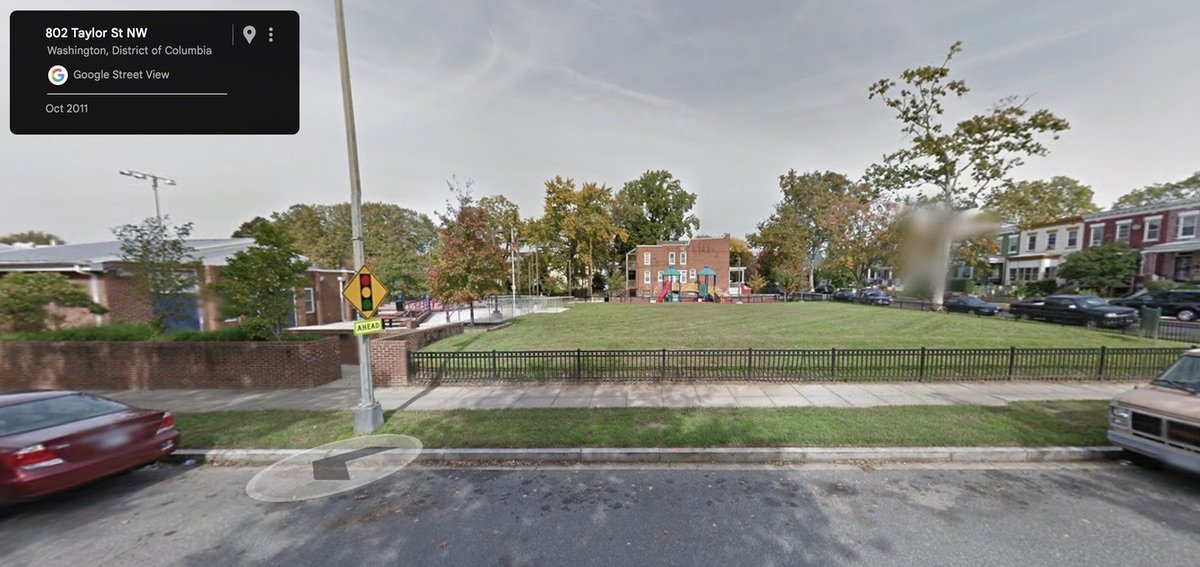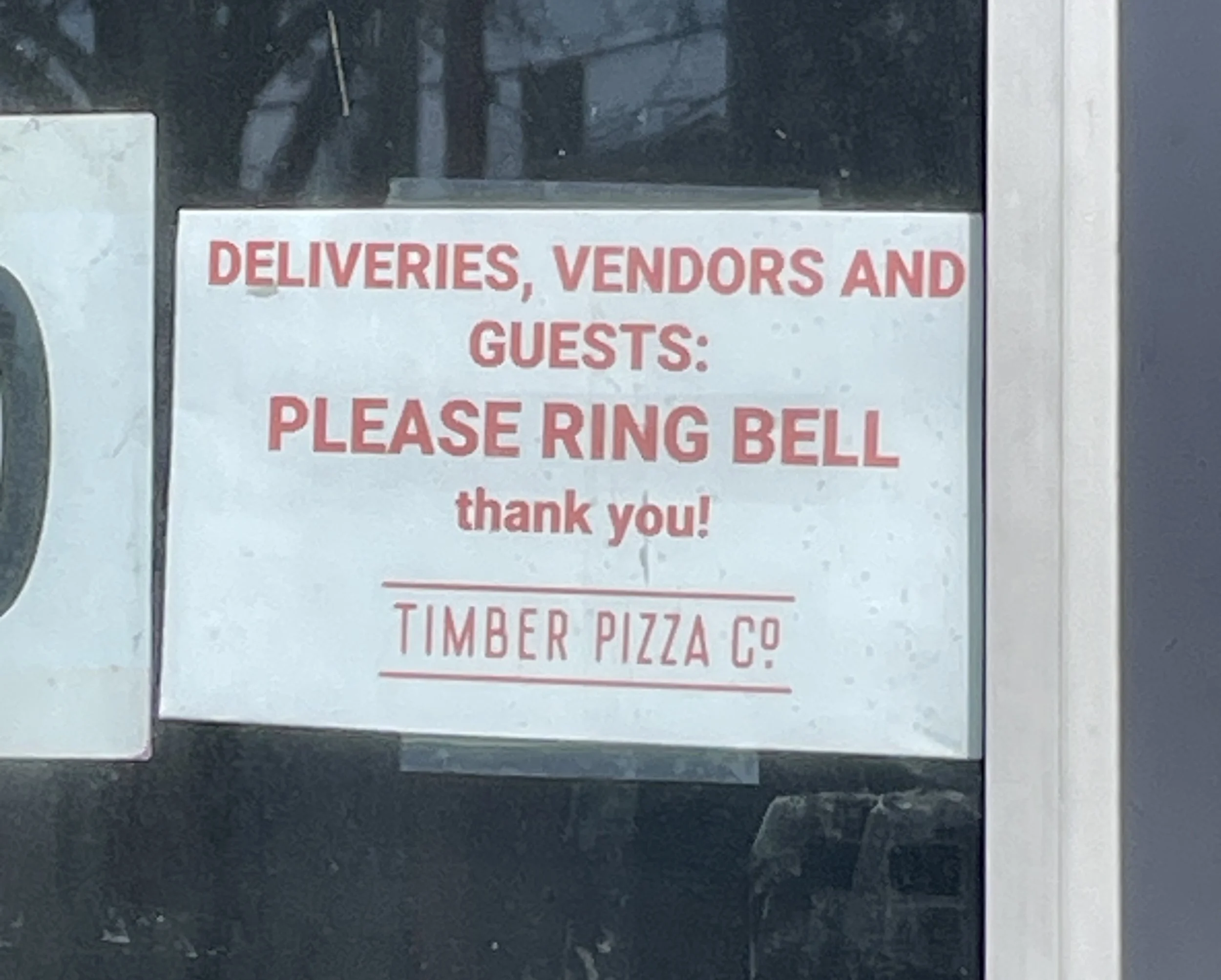A ride-along with 4D MPD, part 1
/Last month I had the opportunity to spend a day doing a ride-along with MPD Lieutenant Van Crawford, the PSA 407 manager in Petworth. My main goal was to get an understanding of some of the issues MPD is facing regarding local criminal activity and community engagement, and share with MPD some of the thoughts and concerns of the community. It was a great ride-along and I'd like to share the experience with you. (Treat all quotes as my recollection of the conversation.)
This is a long story, broken up into two separate articles, so grab a coffee, soda, beer or your favorite snack and dig in.
I think it's a given that there's a social contract we all sign by virtue of living in a city: we agree to live our lives, and let others live theirs. When that contract breaks down and violence increases, trust decreases. Trust in our neighbors and trust in our city government suffers, as people wonder if those people on the corner are talking about sports, or are they about to argue with guns? People wonder who will step in to mitigate the crime in the short term and the long term. People want to know the police are there to protect and respect them.
In the past seven months we've seen an uptick in crime and shootings in our area and an increase in the disconnect and distrust between police and citizens nationally. MPD is trying to create and maintain connections they've developed in the community, which is one reason I asked for the ride-along, and the reason they finally agreed to my request (it was a bit of an uphill battle, I'm guessing because I write a local blog, and I thank 4D Commander Wilfredo Manlapaz for his assistance in making it happen).
My meeting with Lt. Crawford was set for Tuesday morning, April 7th at the 4D substation at 750 Park Road NW. This is a cool, historic building and just seems right for a police station located in a neighborhood. As an old, long-term police station, it clearly has architectural connections to the past as well as more modern elements (large screen flat TVs have a way of making things feel 21st century).
I arrived early at the station, and met Lt. Crawford outside as he pulled up in what was clearly a new patrol car (had that "no-one-arrested-and-thrown-in-back-yet" new car smell). Lt. Van Crawford is very warm and engaging, and made it clear to me that he wanted to be as helpful and informative as possible. He knew I was going to write up the experience for the blog, and he was candid and personable and I'm definitely a big fan of the LT.
If the LT was trying to impress me with this bad-ass car... it worked.
First thing Crawford asked me was "Did you have your coffee yet?" It's 9am and sir, I'm always in the mood for a cup of coffee.
So he drove me to his favorite breakfast spot, located in Brookland. I wasn't sure where we were going, but as were chatting along the way, I knew I was in for a good ride that day.
We pull up to Murray & Paul’s restaurant (3513 12th St NE) and a couple of men walking down the street nod at Lt. Crawford as he gets out of the car. I'm not sure if it's because they recognize him, or just recognize a badge. We walk into the diner and the LT gets hellos and smiles from the people working behind the counter, and we head to a booth. As we sit down, someone brings milk over to Crawford and two place settings. “They know me,” Crawford says somewhat sheepishly, “I’ve been coming here for my morning oatmeal for 25 years. I don’t have to order any more.” They bring me my coffee and it’s good. Ok, I think, I like this place.
Just as Crawford and I start talking, an officer comes in with Councilmember Vincent Orange. The Councilmember greets a few people and heads past us to what looks like his regular booth in the back. The officer with him starts chatting with Crawford as I look over the menu and get occasionally peeked at by the officer. I'm sure he's wondering the same thing I am: what am I doing here exactly?
The answer was breakfast. I have to give two big thumbs up to both Murray AND Paul; delicious eggs, bacon and home fries. Definitely recommend the place.
While we ate, Lt. Crawford and I talked about his background. He’s a long-term Ward 4 resident, having grown up on the 900 block of Ingraham and went to Truesdell, McFarland and Carroll high school, and American University for college. “I’ve been with MPD for 28 years,” Lt. Crawford said. “Last kid in college, so I retire in June.” (I had heard he was leaving, and while I’m happy for him, PSA 407 is losing a strong community partner.) We talked about some of the issues that MPD was facing, and he said the biggest department issue was attrition. “There’s a lot of officers like me, 20, 25 years on the force and looking to retire.”
This issue with attrition through retirement is a topic we’ve heard from Commander Manlapaz and Chief Lanier. Both have claimed the situation is ok, but all have said it’s an issue that needs to be addressed.
In fact, the MPD officer who accompanied Councilmember Orange made a similar comment when he was talking to Crawford. They joked about his light duty that morning, and the officer mentioned that he’s taking it easy, waiting out the last couple of years before retirement.
“There was a bump in hiring in the late 80s, early 90s, and then it stalled,” Crawford said to me. “What you’re seeing now is that group is getting ready to leave, and there aren’t enough middle career officers ready to step up.”
After we ate, Lt. Crawford wouldn't let me pay for my meal. When I insisted, he agreed, took my money and instead gave it to the server as the tip. Class act.
Then we began driving back to our area. “So you grew up here?” I asked him.
“I did, I didn’t go far,” he laughed. “I like this area. And I like the improvements I see in the area now.” I asked what he thought those improvements were, and why he thought they were occurring.
“It’s a somewhat different set of people here now,” he said. “More families invested and concerned with their neighborhood. They’re making a difference.”
I asked how MPD was making a difference, and Lt. Crawford said that it’s about visibility. “The more you saturate an area, it alleviates the perception of it being a crime area,” he said.
We talked about the idea of foot patrols — they sound great to residents, but in reality, it means one officer only covers a tiny percentage of their patrol area.
“That’s why we look to bicycle patrols, Segways,” he said. “Getting officers out of their cars and more visible. We also have new partnerships with the US Park Police and mounted police in the parks to help with visibility.”
“What about having officers get out of their cars to talk to residents, get to know them?” I asked. I said that knowing who the patrol officers were in your area of the neighborhood can go a long way to creating confidence, trust and familiarity on both sides.
“I agree with part of that,” he said. “But can you imagine how it would work if an officer rolls up in his car, gets out and goes up to people minding their own business and just says ‘hi’?” He laughs, “I don’t think some people would appreciate an officer approaching them.” (He’s probably right.)
“But that’s why we do the PSA meetings,” he added. “And we’re always looking to do, happy to do, community meetings at the homes of residents. Just call us, ask us to come out and speak. Even if it’s a few neighbors gathered after dinner, we’re happy to meet and talk.”
We arrive back in PSA 407 along 7th and Warder streets, and Lt. Crawford starts pointing out some of the recent “wins” MPD has had, due to community involvement and good policing.
He points to a church along Randolph and New Hampshire Avenue as we pass by. “Residents called to complain about suspected prostitution in the alley behind the church. We came in, investigated and moved them out and were able to end that situation last summer,” he said. I asked him how often MPD patrols alleys (when was the last time you saw a cop randomly drive through an alley?). Crawford said that they drive through the alleys once an hour. He said he assigns alleys to specific officers so they learn the area, the residents and help to prevent robberies.
Robberies and drug-related crimes are the number 1 and 2 crimes committed in PSA 407. (The number one crime is theft from cars, according to Crawford.) He said that they work hard to prevent robberies. “It’s about knowing the area, the usual suspects and where to be looking,” he said. In an alley, for example, they look for things that shouldn’t be there like trucks, vans or people walking through the alley who don’t live in the area.
“We know where the problem houses are, where some of the people causing a majority of the crime live,” Lt. Crawford said. “Knowing that and proving that are different.”
Knowing where crime tends to happen, or where certain suspected individuals live, is why you sometimes see MPD cars sitting in Sherman Circle, temporary lights set up or even mobile cameras on seemingly random streets. “There are pockets of crime, houses, that tend to be the ones causing most of the issues,” said Lt. Crawford. There are dozens of properties on MPD’s watch list. “We have a good US attorney to work with on nuisance crimes and problem properties,” Crawford said as we turned onto Farragut Street. “Michael Aniton is very responsive not only to MPD, but to residents,” he said. “It’s important that people report nuisance properties. It matters.” (Michael Aniton works for DC Attorney General Karl Racine in the Neighborhood and Victim Services Section.)
As we drive along we see a man standing in the middle of a side street, a car quickly pulling away from him. Lt. Crawford slows down and calls out: “Everything ok, sir?”
The man turns around, see’s us, looks back at the car leaving and walks over. “Hi, everything is fine. Just my brother-in-law, a small argument. No, everything is cool.” Lt. Crawford nods his head and says “Good, great, glad to hear.” The guy leans in, asks us how it’s going. Right at this moment I’m thinking “This guy thinks I’m a cop” and for a second, that’s kinda cool. He asks us about the neighborhood, “I used to live here, had to move out. Too much crime. My mom is still here and I’m thinking of moving back,” he said. “Do you think it’s a safe neighborhood? Is it better than it was 20 years ago?”
I have to say that this whole interaction seems slightly disingenuous, like the guy is making conversation as a distraction (and it’s strangely coincidental, considering the whole point of this ride-along is to talk about safety and the community). I look around as he’s talking but there’s nothing going on around us. Maybe I’m just being paranoid — and I’ve only been in the patrol car for 2 hours. Imagine the suspicions if you’ve been a cop for years. To Lt. Crawford’s credit, he chatted right along. “Much different,” he says. “The area has changed a lot in the past 20 years. For the better.”
Next up in Part Two: talking with Patrol Officer Clinton Brown, looking at specific hot spots and nuisance properties, talking about body cameras and the difference it makes being involved with the community.
-------------------
Thanks for reading — this is the first inaugural post of the new PetworthNews.org blog, and your participation means a lot. Please feel free to share this site or article on Facebook, leave a comment or just click the Heart / Like button to the right to informally say you enjoyed it. It's good to know.
You can also send me feedback about this site.



















